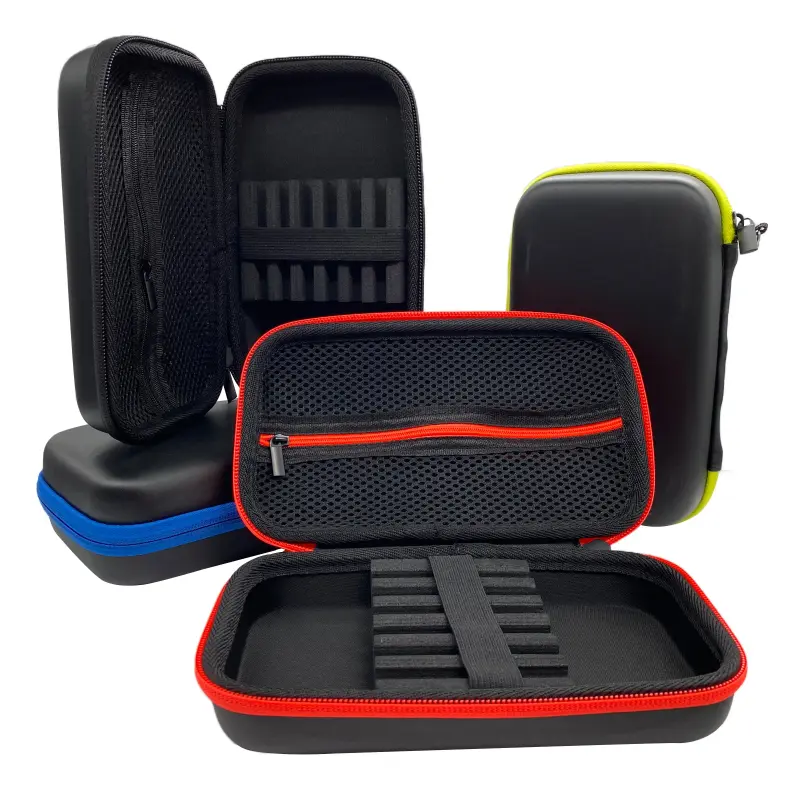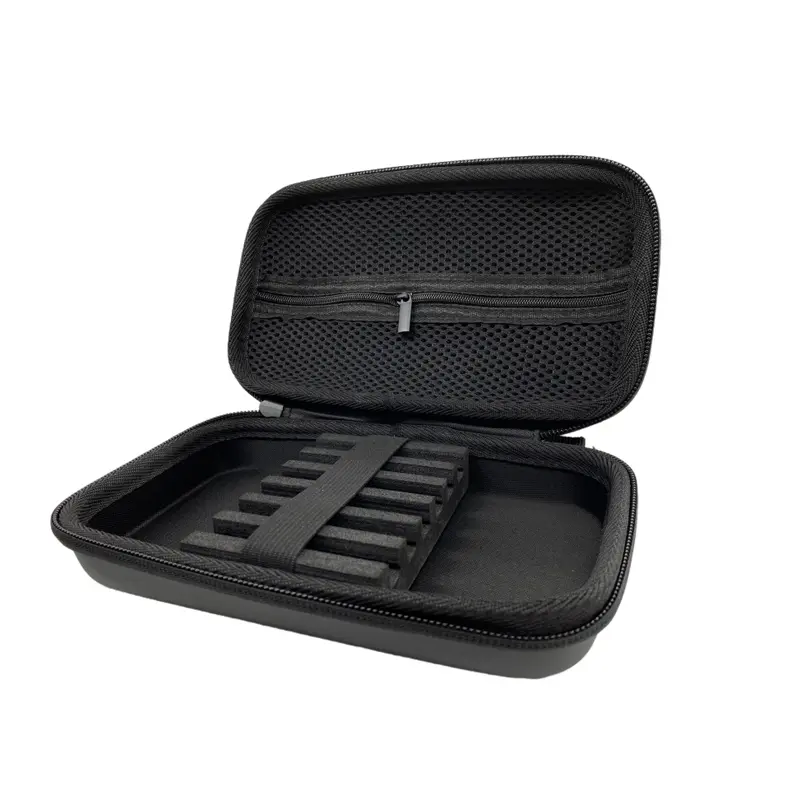EVA tool bag printing
In today’s highly competitive international market, EVA tool bags are favored by international wholesale buyers for their lightness, shock resistance, corrosion resistance and other characteristics. As an important part of EVA tool bags, printing technology can not only enhance the beauty of the product, but also meet the personalized needs of customers.
1. The importance of EVA tool bag printing
EVA tool bags are widely used in electronic product packaging, tool storage, travel cases and other fields. For international wholesale buyers, printing is not only a decorative means, but also an important way to promote brand and differentiate products. Through customized printing, buyers can display unique brand logos, patterns or texts on EVA tool bags, so as to stand out from many competitors and attract consumers’ attention.
2. Common technologies for EVA tool bag printing
(I) Hot press printing
Hot press printing is a technology that transfers patterns or texts to the surface of EVA materials through high temperature and pressure. This technology is suitable for large-area single-color pattern printing, which can ensure the clarity and durability of the pattern. The advantage of hot press printing is that it is relatively simple to operate, low cost, and suitable for mass production. However, the limitation of hot press printing is that it can only process monochrome patterns, and is not very suitable for complex multi-color patterns.
(II) Pad printing
Pad printing is an indirect printing technology that transfers the pattern from the etched steel plate to the surface of the EVA tool kit through a silicone head. Pad printing technology can achieve complex multi-color pattern printing and is suitable for fine patterns in small areas. Its advantages are high printing accuracy and delicate patterns, which can meet customers’ needs for high-quality printing. However, the disadvantages of pad printing are high equipment costs and relatively slow production speeds, which are suitable for small and medium-sized batch production.
(III) Silk screen printing
Silk screen printing is a printing method that leaks ink onto the surface of the EVA tool kit through a silk screen. Silk screen printing technology has a wide range of applicability and can process patterns of various shapes and sizes, and is suitable for large-area multi-color printing. Its advantages are bright printing effects and strong pattern layering, which can meet customers’ needs for personalized and diversified printing. However, the disadvantages of silk screen printing are high plate making costs, and the thickness and dryness of the ink need to be strictly controlled during the production process to ensure printing quality.
(IV) Thermal transfer
Thermal transfer is a technology that pre-prints a pattern on transfer paper and then transfers the pattern to the surface of the EVA tool kit through high temperature and pressure. The advantages of this technology are realistic printing effects, rich patterns, and the ability to achieve complex designs and gradient effects. Thermal transfer is suitable for small-batch production and has a short production cycle, which can quickly meet customers’ customized needs. However, the cost of thermal transfer is relatively high, and the technical requirements for equipment and operators are also high.
3. EVA tool kit printing process
(I) Raw material preparation and pretreatment
Before printing, EVA materials need to be strictly inspected to ensure that their physical properties such as density and hardness meet the requirements. In addition, EVA materials need to be pre-treated, such as cleaning the surface and removing impurities, to improve the adhesion and quality of printing.
(II) Pattern design and plate making
Design unique patterns or texts according to customer needs and make them into plates suitable for printing. For hot press printing and silk screen printing, etched steel plates or screens need to be made; for pad printing, silicone heads and etched steel plates need to be made. Pattern design and plate making are the key links for successful printing, and it is necessary to ensure the clarity, color accuracy and dimensional accuracy of the pattern.
(III) Printing operation
The pattern or text is transferred to the surface of the EVA tool kit according to the selected printing technology. During the printing process, the parameters such as printing pressure, temperature, speed and ink thickness need to be strictly controlled to ensure the uniformity and consistency of the printing effect. At the same time, it is also necessary to avoid problems such as bubbles, scratches and color difference during the printing process to improve the printing quality.
(IV) Post-processing
After printing, the EVA tool kit needs to be post-processed, such as drying, curing, cleaning, etc. For hot press printing and thermal transfer printing, the printed tool kit needs to be placed for a period of time to allow the ink to fully cure; for silk screen printing and pad printing, drying treatment is required to prevent blurring and fading of the pattern. In addition, the printed tool kit needs to be cleaned to remove dust and oil on the surface to improve the appearance quality of the product.
(V) Quality inspection
Quality inspection is an important link in the printing process, and a comprehensive inspection of the printed EVA tool kit is required. The inspection content includes pattern clarity, color accuracy, adhesion, wear resistance, etc. For products that do not meet the quality requirements, they need to be reworked or scrapped in time to ensure the overall quality of the product.
4. Quality control of EVA tool kit printing
Raw material quality control
Selecting high-quality EVA materials and inks is the basis for ensuring printing quality. When purchasing raw materials, it is necessary to select suppliers with good reputation and conduct strict inspection and testing of raw materials. Ensure that the physical properties of EVA materials such as density, hardness, thickness meet the requirements, and the ink has excellent color vividness, adhesion, wear resistance and other properties. At the same time, it is also necessary to pay attention to the environmental protection of raw materials to ensure that the products meet international environmental standards.
Post time: Jul-23-2025






